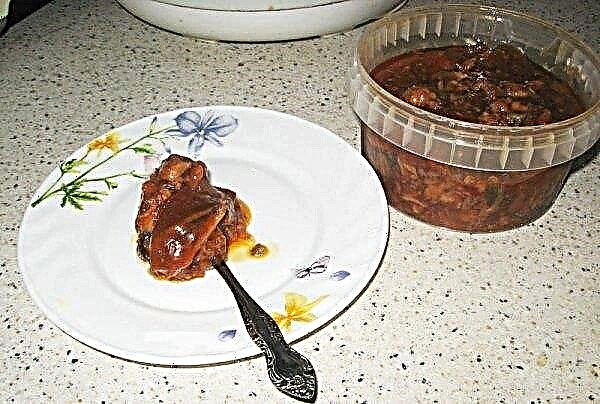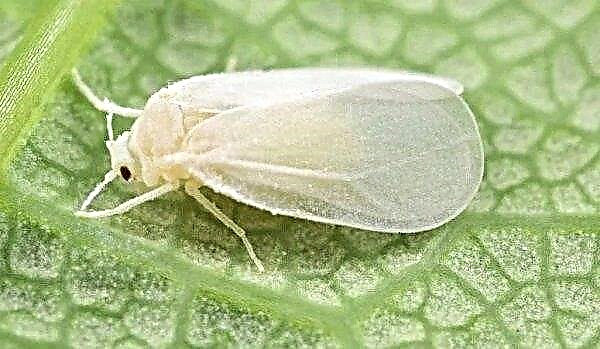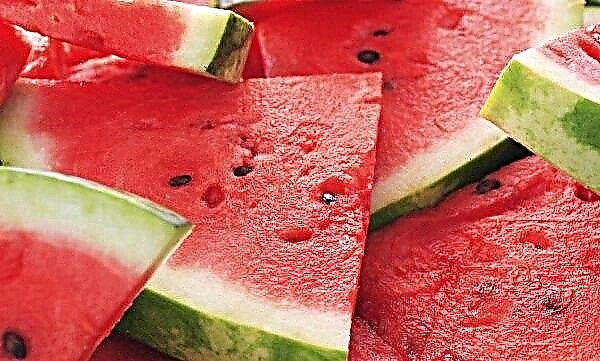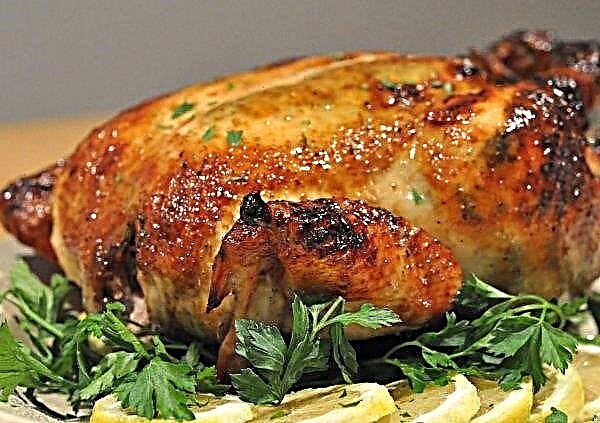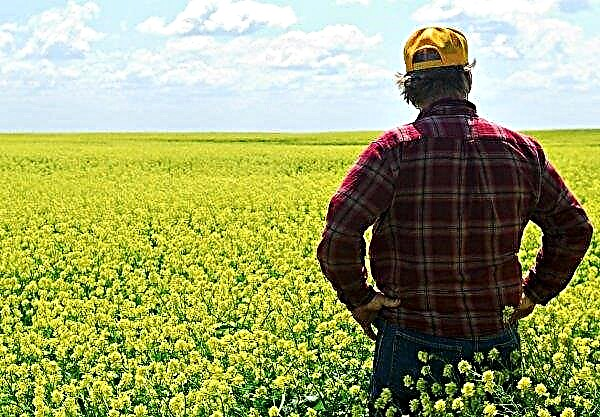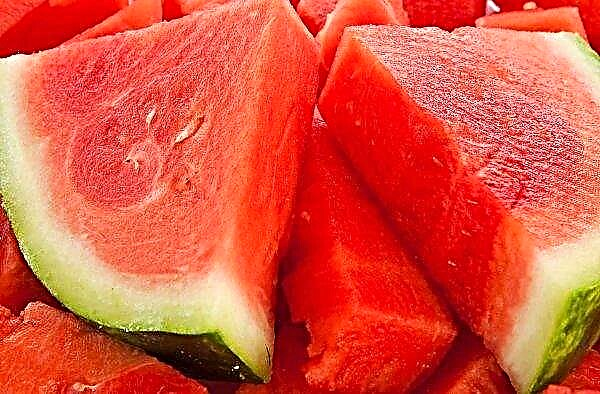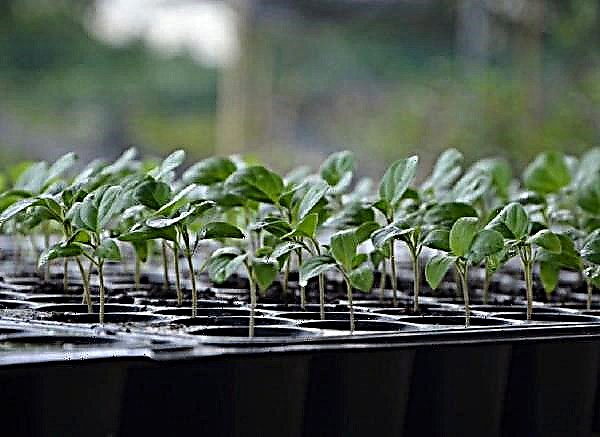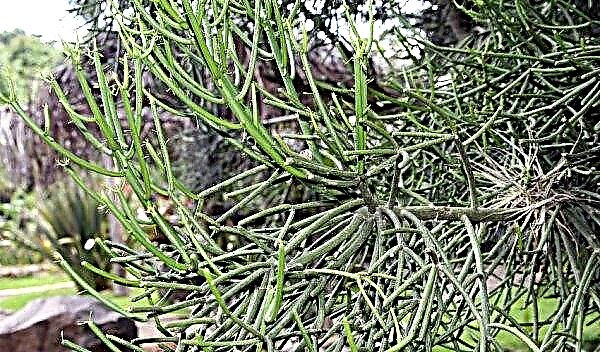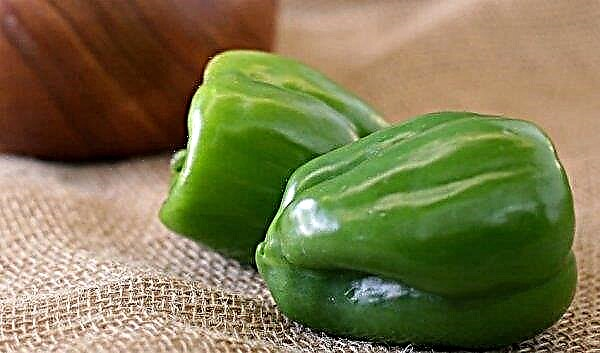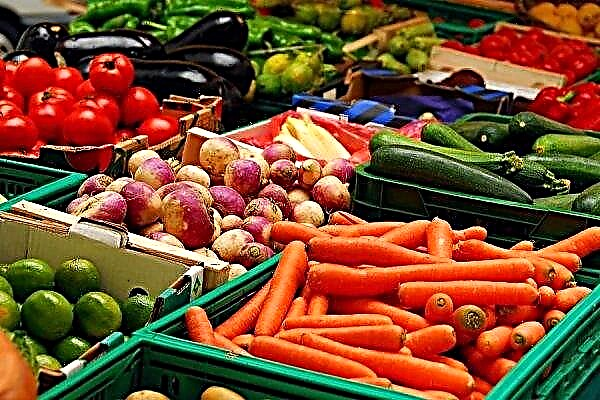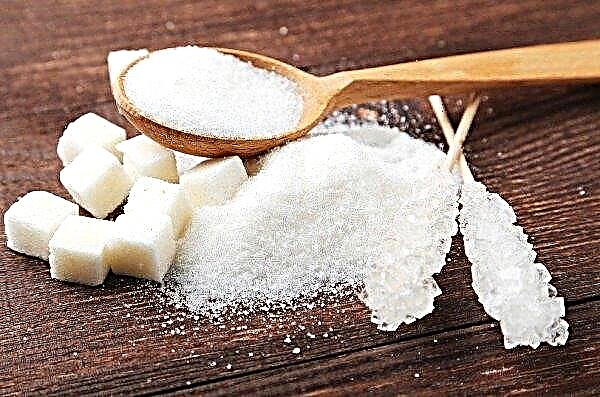Potato cultivation begins with the selection of a high-quality and high-yielding variety of culture that is ideally suited to the environmental conditions in the corresponding region. In this regard, the unpretentious Vega variety is interesting, confidently winning the preferences of gardeners and lovers of potato dishes. Detailed information about the features of the variety is presented in this article.
Origin history
Vega was bred by Dutch breeders. Thanks to its excellent taste, maturing friendliness and high yield indicators, it quickly won the preferences of residents of different countries and today it is successfully grown in Ukraine, Belarus, Russia. In particular, Vega was added to the Russian State Register in 2013.
Did you know? The chromosome set of potatoes is larger than that of humans: for example, humans have 46 chromosomes, and potatoes — 48.
Characteristics and Description
Vega belongs to mid-season table potato varieties, which are excellent for both growing for industrial purposes and for personal use. The variety is resistant to attacks of diseases and pests, and is not afraid of droughts and sudden temperature changes. You can recognize Vega potatoes by the following characteristics:
- the average size of erect or semi-erect bushes, type - intermediate;
- medium leafy;
- dark green wavy foliage;
- large flowers that are painted in white or cream tones and are collected in a compact form of corollas;
- white slightly pubescent sprouts;
- medium-sized tubers;
- oval or round-oval shape of the fruit;
- yellow-colored peel;
- small, small, not deep-set eyes;
- dark yellow pulp;
- the approximate weight of the tuber is 90-120 g;
- lack of non-commodity trifles 4
- the number of tubers in the bush, which varies between 8-10 pieces;
- the duration of the ripening period is from 50 to 60 days.
Photo gallery
Did you know? In the Inca calendar, one of the ways to measure time was considered the time spent on cooking potatoes, which was equal to about one hour.
Advantages and disadvantages
- Varietal variety Vega has an impressive list of benefits, which include:
- high productivity - 230-375 centners of root crops can be collected from one hectare of land;
- excellent palatability - root vegetables can be used both in dietary nutrition and for feeding children;
- short growing season;
- moderately dry, not watery structure;
- starch index 10-16%;
- high safety indicators - 99%;
- excellent transportability;
- evenness and accuracy of root crops;
- resistance to attacks of pests, diseases, and also to damage of a mechanical nature;
- good resistance to drought and to sharp temperature jumps;
- thin but strong peel;
- simultaneous ripening of all fruits;
The small flaws include only the high requirements of the variety to the soil (it must be nutritious) and soil moisture.Important! Vega potatoes do not lose color, even if they are in the water for some time after cleaning. Also, this vegetable does not darken after cooking.
Planting potatoes
The productivity of Vega potatoes depends not only on the characteristics of the varietal variety, but also on the compliance by the gardener of the rules of agricultural technology. Read more about cultivating the variety below.
Optimal landing times
The ideal time for planting this species is the end of April - the beginning of May. During this period, the soil will already be warm enough, which will qualitatively affect the germination and growth of plants.
Check out the growing features of other early potato varieties:
Soil requirements
Potato Vega prefers loose sandy soils. But in order to achieve high and effective fruiting, it is necessary to carefully prepare the soil for future planting and improve its quality by carrying out the following procedures:
- Sideration. If planting will be carried out next year, then in August on the allotted area it is necessary to plant green manure: cereals (wheat, rye, barley), legumes, cruciferous and Asteraceae plants. Such a preparation measure will contribute to saturation of the soil with nitrogen, help to improve the friability and soil structure, increase the level of organic substances, as well as the resistance of future plants to diseases.
- Disinfection. Disinfecting work can begin in the fall. So, 6 months before planting potatoes, the land is cultivated on the site (100-200 g of substance / 1 m²). A month before planting the soil, the soil can be treated with “Formalin” (dilute 250 ml of 40% of the product in 10 liters of water), “Fitosporin” (6 ml / 10 liters of water), the proportions are indicated per 1 m² plot. Immediately before planting, it is recommended that the substrate be treated with Trichodermin - 5 g of the drug is dissolved in 5 liters of water and used on 1 m². You can not simultaneously disinfect the soil with chemical (lime, "Formalin") and biological substances ("Fitosporin", "Trichodermin").
- Fertilizers Since the autumn, land on a site selected near Vega must be fertilized with straw humus and peat. Directly during planting, wood ash and compost substrate should be added to each planting pit.

Important! If in the autumn the soil has gathered in piles, then there is no need to break them, since in clods the earth will freeze better in winter, due to which many weed seeds will be destroyed.
Preparing planting material
This stage boils down to the selection of high-quality tubers and their gradual preparation for planting in open ground.
Planting material can begin to be selected at the stage of potato growth. So, the most promising potato bushes should be noted and in the fall separately collect seed material from them. Tubers for planting should be distinguished by flatness of the surface, the correct form, a healthy appearance, the absence of mechanical damage or damage by pests. It is not recommended to use small root crops, the weight of which is less than 60 g, as the seed material - plants grown from them will not produce a plentiful harvest.
Approximately 20–25 days before planting, the selected tubers must be warmed up so that they germinate. So, the seed material is recommended to be put in separate boxes or containers, in 2-3 layers. Then you need to provide the fruits with good lighting and warmth: the optimum air temperature is + 15ºС ... + 17ºС. For uniform germination of the container with planting material, it is worth moving from time to time. After 21-23 days, the tubers will sprout. This is a signal that it is necessary to begin hardening, which consists in lowering the temperature of the air surrounding root crops to + 6ºС ... + 8ºС. Such a measure is necessary to enhance the appearance of sprouts from each eye, as well as for subsequent uniform germination of all tubers in the garden and a high yield.
After 21-23 days, the tubers will sprout. This is a signal that it is necessary to begin hardening, which consists in lowering the temperature of the air surrounding root crops to + 6ºС ... + 8ºС. Such a measure is necessary to enhance the appearance of sprouts from each eye, as well as for subsequent uniform germination of all tubers in the garden and a high yield.
Important! Before planting, calibrate the seed: it is necessary to discard root crops that have not sprouted or have thinned thin thread-like sprouts.
Landing technology
Landing technology and the scheme is as follows:
- Wells with a depth of 10-12 cm are prepared.
- The distance between the landing pits should be 35–38 cm.
- Between the rows, a distance of 70–75 cm must be observed.
- Tubers with sprouts are placed in the wells and instilled.
 Potato planting technology
Potato planting technologyCare Features
Care for the varietal variety Vega consists of feeding, cleaning the soil from clogging, watering and pest control.
Fertilizer
Three times a season Vega needs root dressing:
- during the active growth of green mass and the formation of tubers, the culture needs fertilizers with ammonia nitrate (20 g of product per 1 m²), urea solution of 0.5 l for each bush (1 tbsp. / 10 l of water). Also at this stage, nitrofosku (50 g / 1 m²) or nitroammophosku (30 g / 1 m²) can be used as fertilizer;
- during budding it is recommended to resort to top dressing with potash substances (20 g of potassium / 1 m²). You can combine potassium with wood ash (1 tbsp. / 1 m²);
- at the flowering stage, the culture needs phosphorus (30–40 g of superphosphate / 1 m²).
Video: Potato Fertilizer
Weed cleaning
This procedure should be carried out regularly, since clogging can cause diseases and pests in the area. It can also provoke overmoistening of the soil and cause rotting of root crops. In addition, the soil must be loosened, especially after watering or prolonged rainy periods, in order to prevent the formation of crust on the surface of the soil and the appearance of mold.
Did you know? Potato — This is a vegetable that was first grown in space, back in 1995.
In dry times, it is necessary to mulch the earth around the bush, as well as between the rows, which will help preserve the moisture that is vital to the culture and protect the plant from drying out. You can mulch the soil with peat, straw, sawdust, mowed grass, last year's leaves, bark, cardboard, agrofibre, dark film.
Twice during the season, the variety needs hilling: this measure promotes the proper formation of tubers and prevents clogging of the planting.
Watering
Humidification should be carried out not often, but plentifully. A good crop can be obtained provided that the soil moistening depth is stably maintained at a level of 40–45 cm. The method of irrigation is drip irrigation, due to which water will go directly to root crops.
Pest and Disease Control
Vega has a strong immunity to attacks of potato cancer, tobacco mosaic, scab, black leg. But the plant can be attacked by the following diseases and pests:
- Late blight - It affects foliage, stems and fruits of the crop (rot in the form of brown spots). To eliminate the disease, spraying with a solution of vitriol of copper (10 g / 10 l of water) or 1% solution of Bordeaux liquid will help.
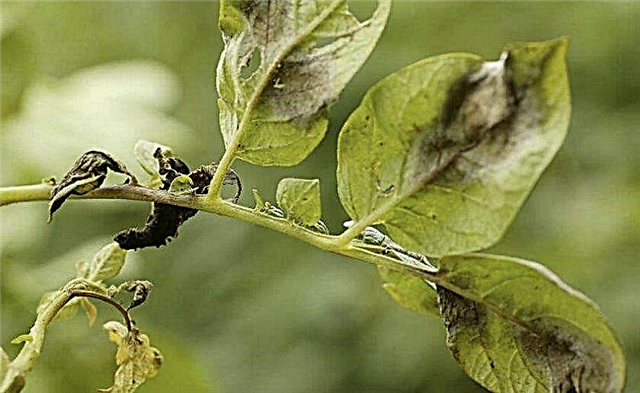
- Verticillus and Fusarium wilt - fungal diseases that occur during the flowering period of the culture. With verticillosis, the lower leaves of the potato initially wither, then the stems and upper foliage. The fungus also affects root crops - their eyes rot. With fusarium, the withering pattern is the opposite: from top to bottom, the disease spreads instantly. The causes of diseases are soil or seeds contaminated with fungi. Affected plants must be removed from the site, and healthy ones should be sprayed with Ditan, Maxim, Gryphon, Premier Gold, Rovral Aquaflo solution for prophylaxis, strictly following the instructions.
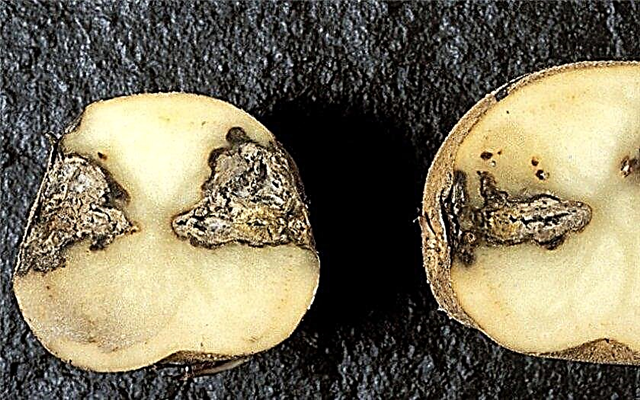
- Colorado beetle - A gluttonous insect that can literally absorb potato bushes. If the pest has just appeared on the site in small quantities, it, together with the larvae, can be collected manually, placed in a container with salt water and destroyed. To eliminate large colonies of the pest, you will have to resort to the help of insecticides: “Sonnet”, “Prestige”, “Confidor” (the solution for processing is prepared strictly according to the instructions).

- Potato wire - a light, hard and durable worm 3-4 cm long, which causes harm to root crops by drilling through holes in them. Preventive measure against a pest - tearing a worm in half if it was detected during soil preparation. Also, the amount of the drug "Bazudin" or "Nemabakt" indicated in the instructions must be entered into the landing hole.

- Aphid - a green or brown insect 2.5–4 mm long, the food of which is potato juices. Sugar aphid excretion products are a favorable medium for the growth of soot fungus. The pest is afraid of tobacco infusion: 400 g of tobacco is poured into 2 liters of water, boiled, left for a day, then added to the mixture 40 g of laundry soap, a bucket of water and sprayed with potato bushes.
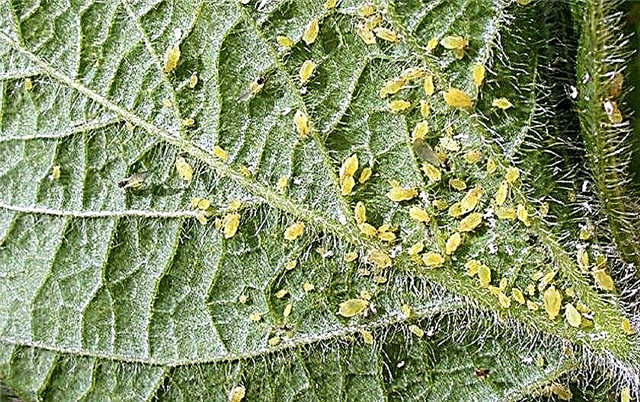
- Thrips - small (0.5–2 mm) flying insects of brown or dirty yellow color. If you don’t take a closer look, you might think that the foliage is just a speck. Insects damage the greenery of plants, leaving behind brown spots that soon turn black. Garlic infusion will help to drive them out: 150-200 g of garlic are infused for 5 days in 1 liter of water and filtered. For spraying, a solution is prepared using 60 ml of tincture, 40 g of laundry soap and a bucket of water.
Important! Any disease is easier to prevent than to eliminate. Therefore, in order to avoid problems in growing Vega potatoes, take timely preventive measures regarding the soil, seed material and the bushes themselves.
Harvesting and storage
It is recommended to collect the fruits of the described varietal variety, as well as other types of potatoes, after the tops fade. The exact time of fruit harvesting depends on the region where the crop was planted: in the warmer it can be harvested in November, in the colder in September. The main thing is to catch it before the freezing starts.
Before sending the root crops to the storage place, it is necessary to sort: take away planting material, separate damaged, diseased and too small vegetables. It is recommended to store root crops in a cellar or other room that meets the following criteria: dryness, darkness, coolness. The optimum storage temperature is + 2ºС ... + 4ºС. If the thermometer goes down, the taste of the vegetable will deteriorate, and when the temperature rises, it will begin to sprout prematurely.
It is recommended to store root crops in a cellar or other room that meets the following criteria: dryness, darkness, coolness. The optimum storage temperature is + 2ºС ... + 4ºС. If the thermometer goes down, the taste of the vegetable will deteriorate, and when the temperature rises, it will begin to sprout prematurely.
The potato variety Vega has good preservation - 99% of the fruits are successfully waiting for a new crop, provided that you did not have time to eat them.






